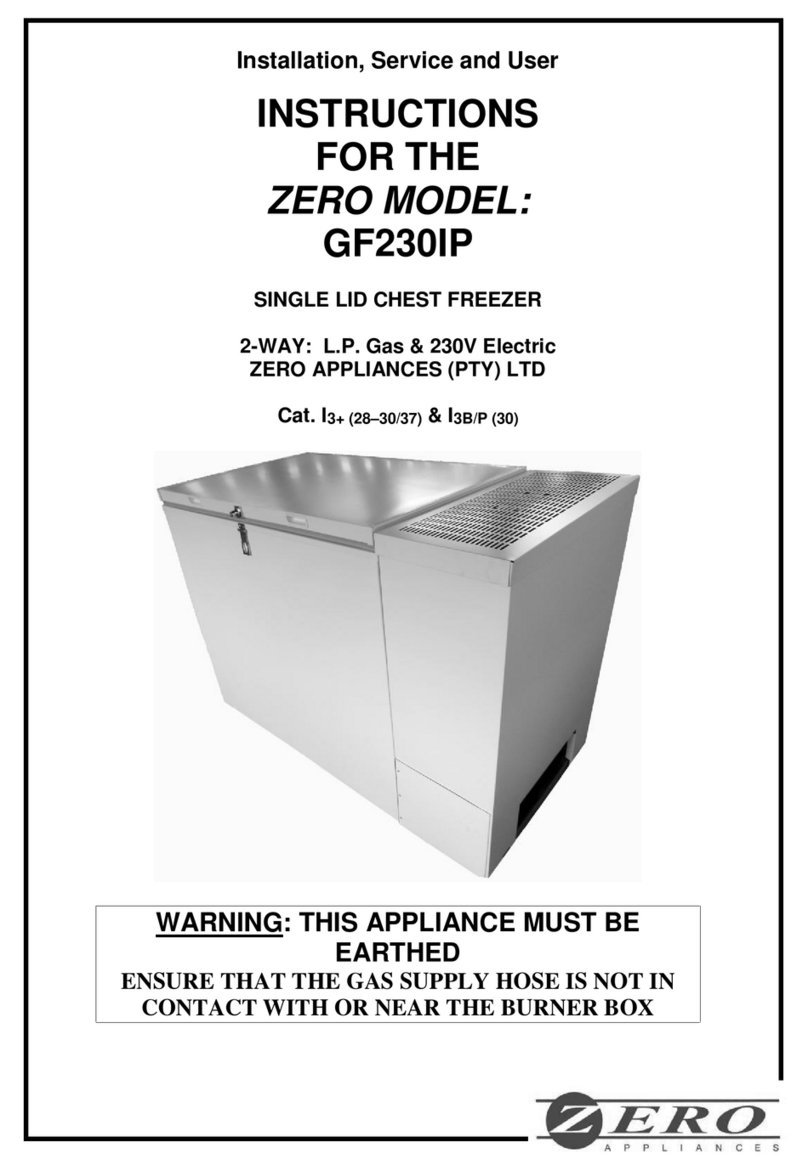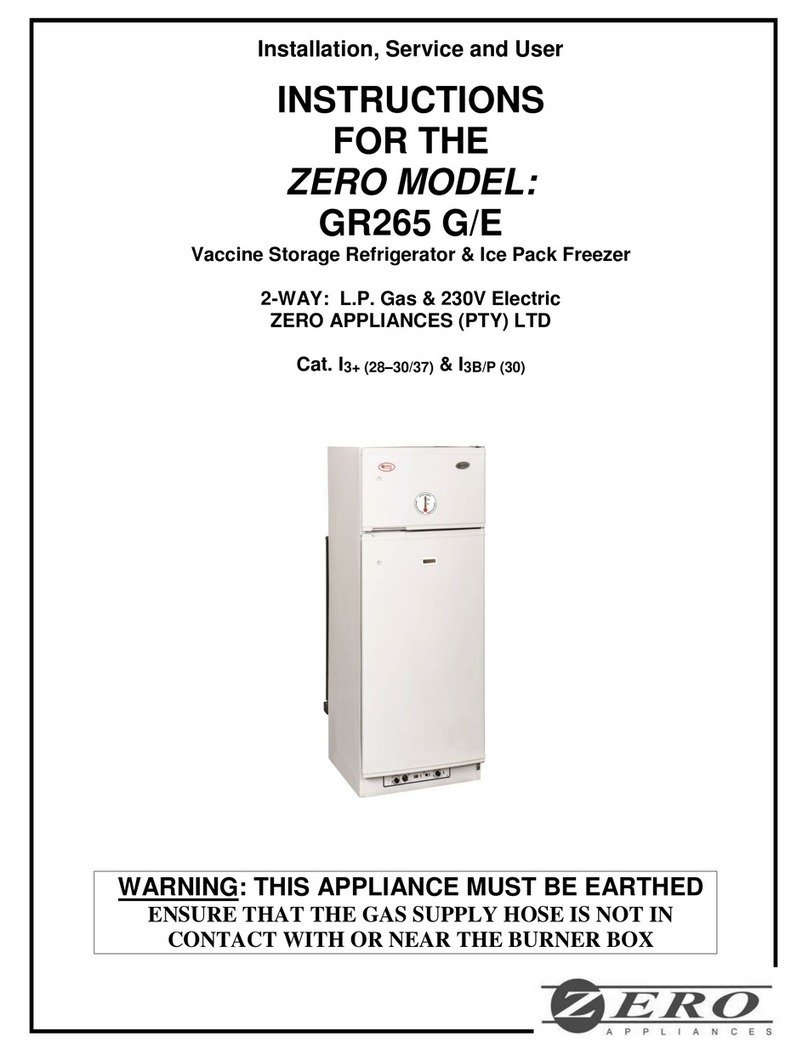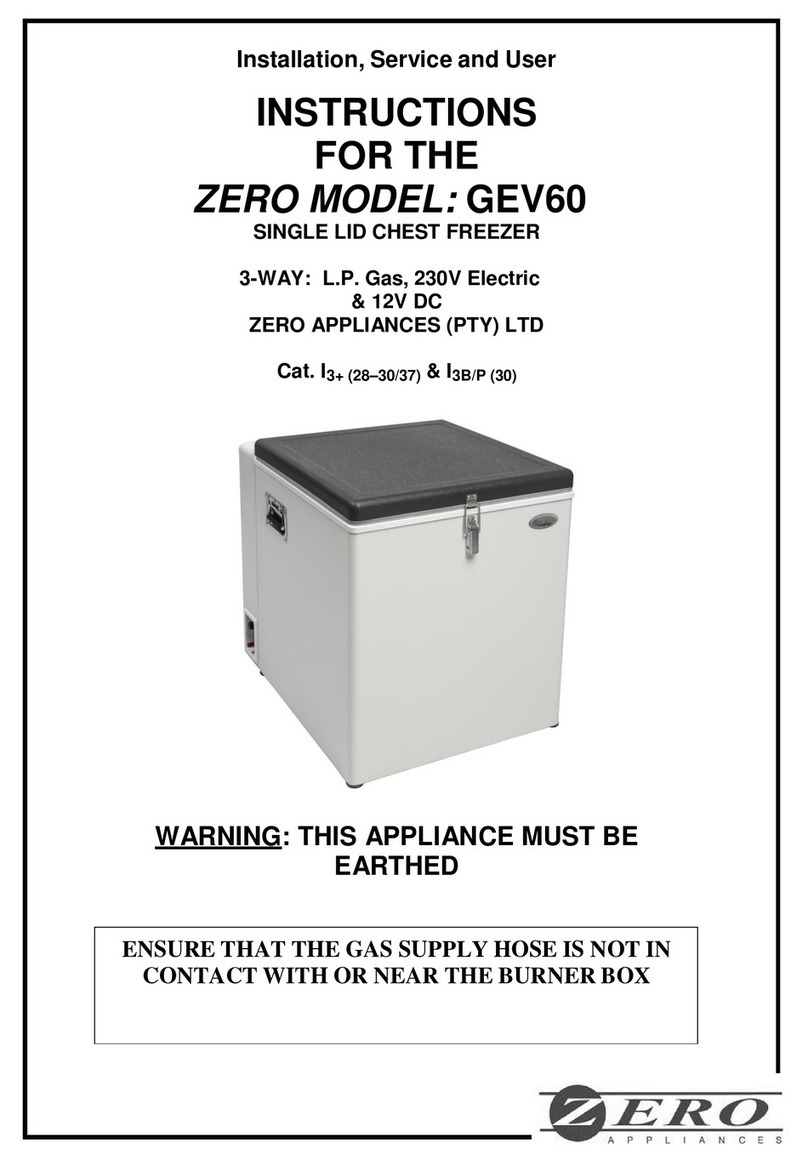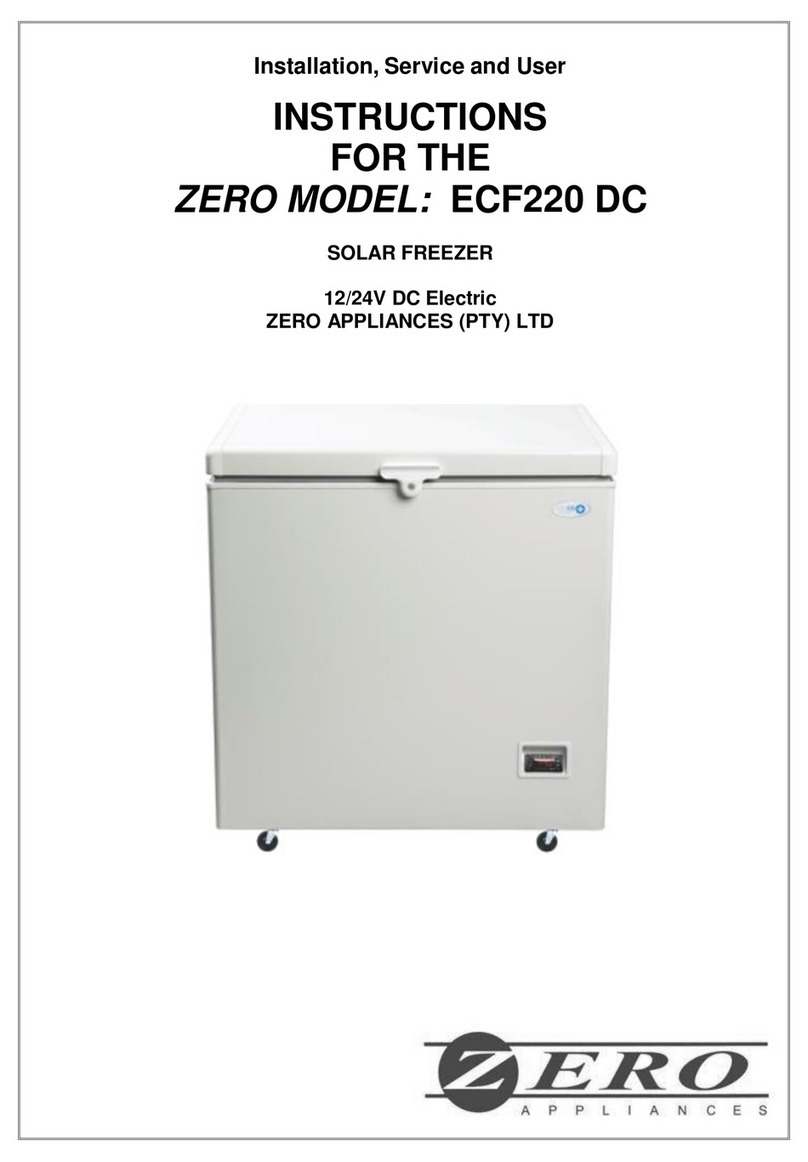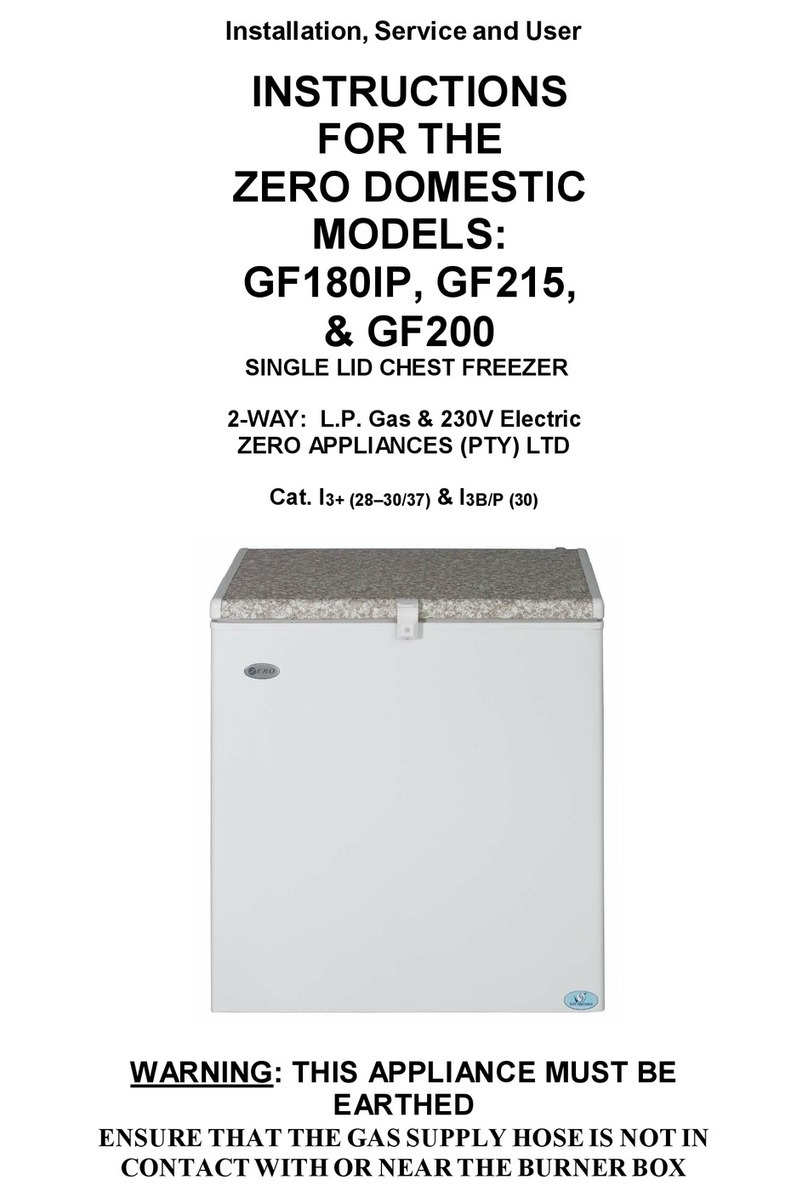Before Using Your Freezer
•Remove the exterior and interior packing.
•Before connecting the freezer to the power source, let it stand upright for approximately 2
hours. This will reduce the possibility of a malfunction in the cooling system from handling
during transportation.
•Clean the interior surface with lukewarm water using a soft cloth.
•This appliance is not intended for use by persons (including children) with reduced
physical, sensory or mental capabilities, or lack of experience and knowledge, unless they
have been given supervision or instruction concerning use of the appliance by a person
responsible for their safety.
•Children should be supervised to ensure that they do not play with the appliance.
•If the supply cord is damaged, it must be replaced by the manufacturer, its service agent or
similarly qualified persons in order to avoid a hazard.
Installing Your Freezer
•This appliance is designed to be free standing only, and should not be recessed or built-in.
•Place your freezer on a floor that is strong enough to support the freezer when it is fully
loaded.
•Allow 15 cm of space between the back and sides of the freezer, which allows the proper
air circulation.
•Locate the freezer away from direct sunlight and sources of heat (stove, heater, radiator,
etc.). Direct sunlight may affect the acrylic coating and heat sources may increase
electrical consumption. Extreme cold ambient temperatures may also cause the freezer
not to perform properly.
•Avoid locating the freezer in moist areas.
•Plug the freezer into an exclusive, properly installed-grounded wall outlet. Do not under
any circumstances cut or remove the third (ground) prong from the power cord. Any
questions concerning power and/or grounding should be directed toward a certified
electrician or an authorized service center.
•After plugging the appliance into a wall outlet, allow the unit to cool down for 2~3 hours
before placing food in the freezer compartment.
•ENSURE THAT THE APPLIANCE IS STANDING LEVEL
